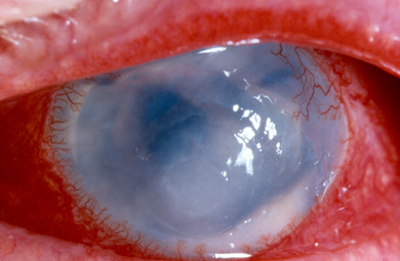Fungal keratitis is a serious infection of the cornea—the clear, round dome covering the eye’s iris and pupil. Symptoms of fungal keratitis include:
- sudden blurry vision;
- unusual redness of the eye;
- pain in the eye;
- excessive tearing or discharge from your eye; and
- increased light sensitivity.

Risk factors for fungal keratitis include trauma (usually when plant material gets into the eye), chronic or ongoing disease of the surface of the eye, a compromised immune system, and, rarely, contact lens use. Keratitis is not transmitted from person to person.
Fungal keratitis is treated with topical and oral antifungal medications. Patients who do not respond to medical treatment may require eye surgery, possibly including a corneal transplant.
Safe handling, storage, and cleaning of contact lenses are key measures for reducing the risk of infection. You should always use the following safe practices with your lenses:
- Wash your hands with soap and water and dry them before handling lenses.
- Wear and replace your lenses according to the schedule prescribed by your ophthalmologist (Eye M.D.).
- Follow instructions from your ophthalmologist and your lens solution manufacturer for cleaning and storing your lenses.
- Make sure you always use fresh lens solution and replenish the solution daily.
- Keep your contact lens case clean and replace it every three to six months.
- Remove your lenses and consult an ophthalmologist immediately if your eyes become red or irritated or if your vision changes.
No matter which cleaning or disinfecting solution you use, consider performing a “rub and rinse” lens cleaning method rather than a “no-rub” method. This can minimize the number of germs on your lenses, reducing your chances of infection.
(c) 2007 The American Academy of Ophthalmology
Categorized in: Cornea and External Disease, Red Eye
This post was written by Rob Schertzer